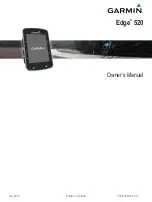
Control Sources
Main Control Source List
4-13
115
LFO1 Phase (LFO1ph)
This bipolar control source generates it signal based on the cycle of LFO1. When the
phase of LFO1 is 0 degrees, the signal value of LFO1ph is 0. When the phase of
LFO1 is 90 degrees, the signal value of LFO1ph is 1. When the phase of LFO1 is 180
degrees, the signal value of LFO1ph is 0. When the phase of LFO1 is 270 degrees, the
signal value of LFO1ph is -1.
116
LFO2
This functions exactly the same as LFO1, when the Globals parameter is set to
Off
(on the COMMON page in the Program Editor). When the Globals parameter is set
to
On
, LFO2 becomes global (GLFO2).
117
LFO2 Phase (LFO2ph)
This functions exactly the same as LFO1ph, responding to the cycle of LFO2.
118, 119
FUN3, FUN4
These function exactly the same as FUNs 1 and 2, when the Globals parameter is set
to
Off
(on the COMMON page in the Program Editor). When the Globals parameter
is set to
On
, FUN4 becomes global (GFUN4).
120
Amplitude Envelope (AMPENV)
This programmable unipolar control source lets you vary the effect of a control
source parameter over time. See Chapter 6 of the Musician’s Guide.
121, 122
Envelopes 2 and 3 (ENV2, ENV3)
These are programmed in the same way as AMPENV, but they can be bipolar.
123
Loop State (Loop St)
This unipolar control source switches to +1 when the currently playing sample
reaches its LoopStart point. If you’ve programmed a sound with a User amplitude
envelope, Loop St will always be on (+1) for that sound. See Chapter 14 of the
Musician’s Guide for more about sample loops.
124
Sample Playback Rate (PB Rate)
The signal value of this bipolar control source is determined by the sample playback
rate of each note. The playback rate is a function of the amount of transposition
applied to a sample root to play it at the proper pitch for each note. If you trigger a
note where a sample root is assigned, the PB Rate signal value for that note is 0. If
the note is above the sample root, the sample is transposed upward, and its
playback rate is higher than that of the sample root. Consequently the PB Rate
signal value for that note will be positive. If the note is below the sample root, the
PB Rate signal value will be negative.
125
Attack State (Atk State)
This unipolar control source switches to +1 and back to 0 very quickly with each
note start.
Содержание K2661
Страница 18: ...2 4 LFOs LFO Shapes...
Страница 34: ...3 16 DSP Algorithms...
Страница 54: ...5 4 MIDI Note Numbers Note Numbers for Percussion Keymaps...
Страница 72: ...7 10 System Exclusive Protocol K2661 System Exclusive Implementation...
Страница 82: ...9 4 Upgrading Sample Memory Choosing and Installing a SIMM for K2661 Sample Memory...
Страница 334: ...10 252 KDFX Reference KDFX Algorithm Specifications...
Страница 340: ...11 6 Glossary...
Страница 382: ...12 42 Triple Modular Processing Alphanumeric Buttonpad Entries for DSP Functions...
Страница 392: ...B 6 SysEx Control of KDFX MSB and LSB...
Страница 442: ...D 20 Contemporary ROM Block Objects Controller Assignments Contemporary ROM Block...
Страница 490: ...H 12 General MIDI Standard Mode Controller Assignments...
Страница 492: ...I 2 Live Mode Objects Live Mode Programs...
Страница 498: ...K2661 Musician s Reference Index...
Страница 500: ......















































